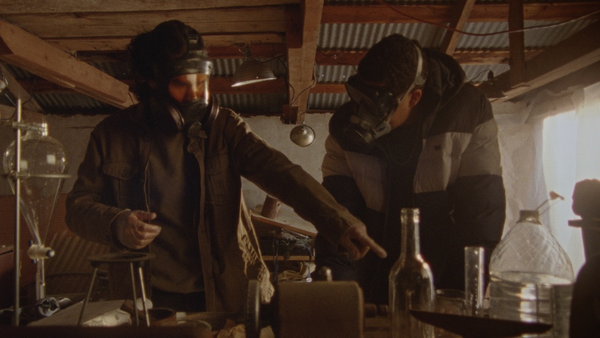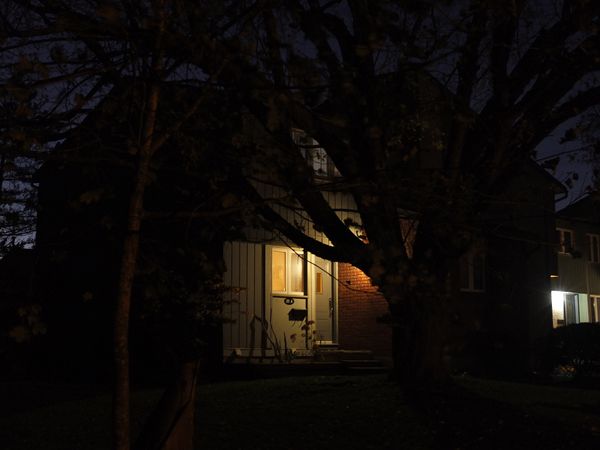On May 4, a man in Strathcona County, Alberta, killed his spouse, their 13-year-old daughter and the family dog before turning the gun on himself.
This sort of domestic violence — the kind that ends with the death of the perpetrator — occupies a strange place in our collective consciousness. Our instinct to keep from compounding the grief of survivors by not portraying their loved one as a killer, along with a profound societal misinterpretation of “don’t speak ill of the dead,” allows these men to absolve themselves of any crime with their deaths, transforming their brutal acts of domestic violence into familial tragedies.
Unable to call them suspects, defendants or perpetrators, they become tragic figures, men who loved not wisely, but too well. In the Strathcona case, this manifested as a swift search from the media for an explanation of the murder-suicide that didn’t include domestic violence. The husband, it was reported, “enjoyed rough and tumble pursuits.” It was “well-known that he had suffered concussions.” Perhaps a “brain-injury, combined with other mental health issues may have played a role” in his choice to murder his family.
Our collective grappling with how to confront such crimes speaks to a much deeper issue: the near inability of many mainstream Canadian institutions to take ownership of gendered violence. A woman is murdered every 2.5 days on average in this country, according to a 2019 report from the Canadian Femicide Observatory for Justice and Accountability. The violence that Indigenous women and girls are subjected to within these colonial borders is so vicious, and so distinctively Canadian, that it has rightly been called genocide by the National Inquiry into Missing and Murdered Indigenous Women and Girls. But when this violence occurs, both the media and leadership often struggle to label it accurately.
While some Alberta newspapers sought explanation for the Strathcona killings in old head injuries, Strathcona County Mayor Rod Frank said his community had experienced “a heart-wrenching loss of three lives.” Royal Canadian Mounted Police Supt. Dave Kalist said that a “mother and daughter died as a result of homicide.” These statements strip the intentionality from the violence, as though the family lost control on a patch of black ice. No one’s fault. A tragedy.
Journalists will use the words “horrific,” “shocking,” “devastating” and “unthinkable” when they report on the violent deaths of women and girls, but these adjectives obscure the darker truths: These killings are common, predictable and more frequent than we’d like to believe. They are part of the fabric of Canadian culture.
Many of us are far from understanding that some of what makes up our “Canadianness” — beer, hockey and oil and gas — contributes to this crisis.
The natural resource sector is one of the three primary industries that comprise the foundation of the Canadian economy. Indigenous feminists and activists have long noted the correlation between resource sector “man-camps” and increased violence against Indigenous women and girls. Recent studies from Sexual Assault Services of Saskatchewan have also found that natural resource economies create rigid gender and racial hierarchies, where “white men make money, white women are economically dependent on them, and Indigenous peoples and more recent immigrants are systematically marginalized and/or exploited.”
The kinds of misogynistic attitudes that allow gendered violence to flourish reach further than our economy, spilling over into leisure activities. Hockey is widely considered to be a Canadian institution, but the wholesome image of the rough and tumble game can’t conceal the undercurrents of violent sexism that lurk within.
Early in May, Brendan Leipsic, a Winnipeg-born NHL forward, had his contract with the Washington Capitals terminated after misogynistic comments he made in an Instagram group chat were made public. Following Leipsic’s firing, Canadian Hall of Famer Brett Hull, who played in the NHL from 1986 to 2005, commented that, “We did the same things, we said the same things, but there was no way to get caught. We can go out after games, we can go to strip clubs, we can go to bars, and we could do whatever we wanted, and it would all be hearsay. The fun is gone.”
Hull essentially stated that now that hockey players can face consequences for doing, and saying, the same violent, degrading things to, and about, women as past generations of players, the sport is no longer fun.
In a 2019 Twitter thread, journalist Nora Loreto argued that hockey is the “most intense location where we form the white supremacy and misogyny on which Canada’s entire system is built and maintained.” Even for those who don’t participate in the sport, hockey is recognized as a Canadian institution. The myth-making around the sport and players means that players such as Hull are role models for men and boys: the way they treat, talk about and behave around women has a real impact on the formation of Canadian masculinities.
This crisis of violence isn’t on its way out — it’s thriving. The enduring commitment to the myth of Canadian politeness — a myth that doesn’t make us good, but rather keeps us from saying anything that could be construed as “bad” — plays a role in allowing this fatal violence to proliferate from generation to generation.
Scholars have noted that in some cultures, violence and politeness “work together and reinforce each other, creating societies where what is on the surface is vastly different from what is occurring underneath.” The unwillingness of media and authorities to believe that Canadian culture can be anything but polite means treating gendered violence as an aberration from, not a component of, our culture. It prevents us as a whole from being able to address the problem at its root.
The way Canadian media frames the problem has to change. While reporters are beginning to ask how we can keep women safer, attempting to address gendered violence by noting its scope and recognizing that it’s a social problem requiring a societal solution, this framing — that women are being killed, and we, some ambiguous “we,” have a responsibility to keep them safer — still shields men from taking full responsibility for the fact that they are doing the murdering.
But individual reporters can only do so much to ensure stories about gendered violence and femicide acknowledge where the responsibility for ending such crimes lies. There are others who hold more power. Editors-in-chiefs and boards of directors in the country, both overwhelmingly white and male, steer the course, and as a result, have an immeasurable impact on the national conversation.
If top editors create and follow guidelines for how stories about gendered violence should be reported, with an emphasis on the systemic factors that contribute to it, they have the power to alter the way Canadians understand and take responsibility for the issue. It’s time for them to do so.







Member discussion